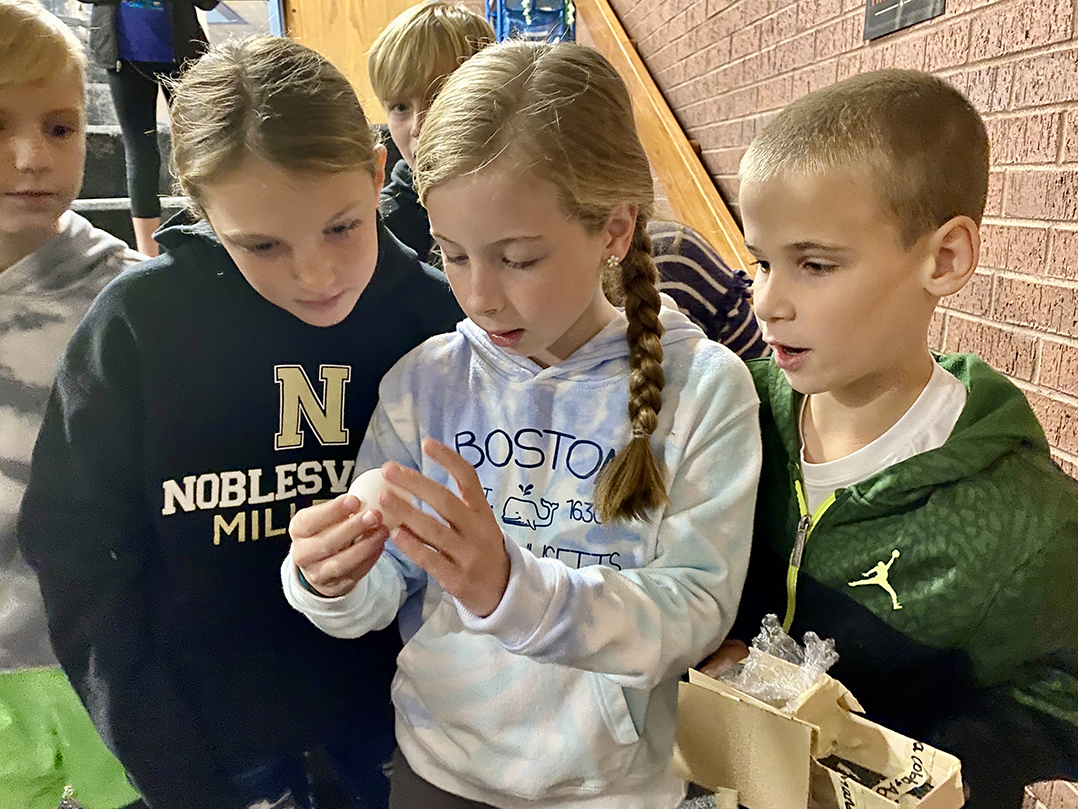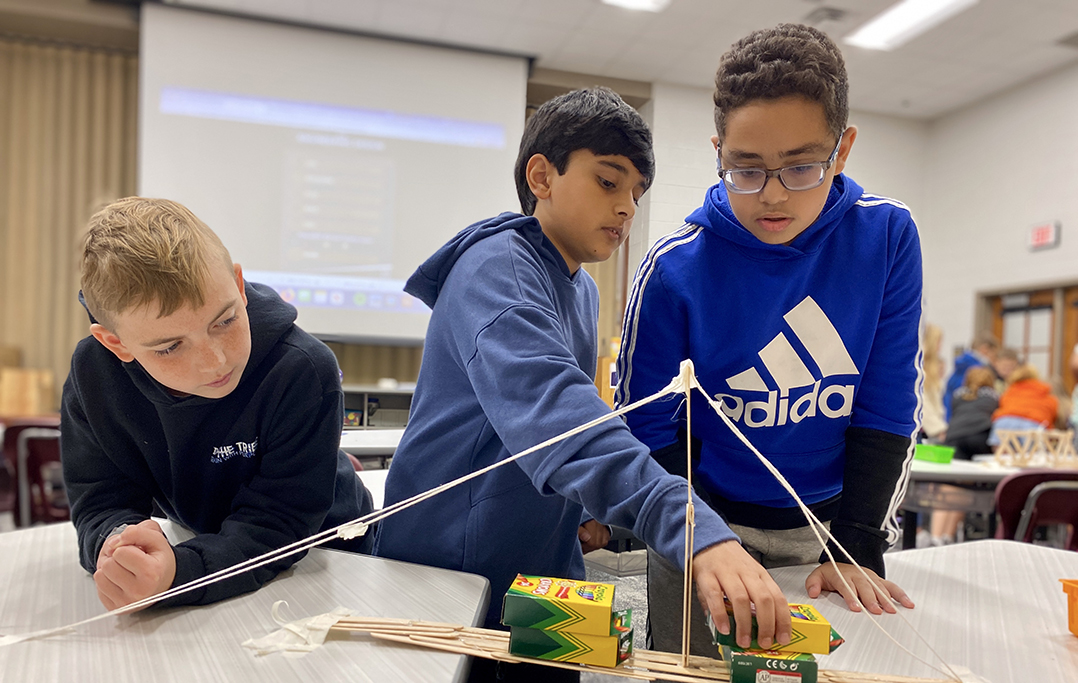Noblesville Schools is giving elementary students a head start in STEAM education.
“The STEAM class is an opportunity for all of our elementary students to gain real-world experience in science, technology, engineering, arts and math,” said Wes Dicken, elementary STEAM lead teacher. “Students in all grade levels (kindergarten through fifth) experience hands-on tasks, challenges and lessons in areas like robotics, biology, data analysis, physics and engineering. This is a standalone class that all students participate in regularly throughout the year. Learning in this class aligns with the standards that students cover in their regular classrooms.”
Dicken develops and assembles curriculum for the elementary STEAM program in all seven of the district’s elementary schools. He also coaches and supports educators who teach the class at each school.
“The future is rapidly changing, and we want to prepare students for future careers in the STEM field, possibly careers that don’t even exist yet,” Dicken said. “Exposing students to these concepts at an earlier age can help spark their interest and prepare them for future learning in these areas.”
Dicken said the students seem to love STEAM.
“They absolutely enjoy solving problems and coming up with solutions for challenges,” he said. “They also enjoy learning new things and showing what they know or what they’ve learned. We hear stories from parents about their students trying challenges or experiments at home — some more successful than others — and having conversations about the things that they’ve learned. There are times when students have struggled with research, note-taking or sketching designs, but this is a great learning opportunity about perseverance and are areas where we’ve seen growth.”
Hazel Dell Elementary fourth-grader Owen Aloisio said he enjoys the class because students work with cardboard and other fun material.
“You get to build stuff and test out your theory,” Aloisio said.
One project the class worked on incorporated kinetic energy to design and build vehicles and restraint systems that can protect an egg in a crash.
“I like it because I love art and you get to be creative and learning at the same time,” Hazel Dell fourth-grader Ada Bishop said.
Dicken said the district is working to streamline its elementary STEAM program with the STEM classes offered at the middle school and high school levels.
“Our goal is to give elementary students opportunities to try several different STEAM areas so that they can take that experience with them as they move into middle school, high school and college,” Dicken said. “Schools are beginning to focus more in this area. It’s exciting that Noblesville created this separate class for all elementary students to support what they’re learning in their traditional classrooms, and in some cases take it to the next level.”
Dicken said STEAM classes rotates throughout the year with music, art, physical education and technology classes in the schools
“We plan to add some additional content, including projects and challenges in computer programming, renewable energy –understanding the positives and the negatives — and genetics,” he said.
Noblesville Schools is working toward building community partnerships that can help students see how the STEAM concepts they are learning have a place in everyday life.
“We are also working with the Noblesville Education Foundation to develop a STEAM museum that would provide hands-on experiences that are bigger than what can be experienced in the classroom,” Dicken said. “We’re also hoping that this could showcase some of what students have done at the middle school and high school levels, building excitement for their future in education.”

Other STEAM projects include
- Constructing bridges and testing how they support weight. This includes studying how bridges are designed, why they’re designed that way and the different types of bridges.
- The study of aerodynamics and flight which includes learning why planes operate the way that they do, applying this to how rockets work, then designing a rocket that is successfully launched and recovered.
- Robotics and automation like building robots, programming and using controllers to move them.
- How light and sound travel in waves and how they can use this information to create a solution for travelers lost on a hike.
- The study of simple and complex machines where students create their own machine to solve a real world problem like rescuing an animal from a zoo enclosure.





